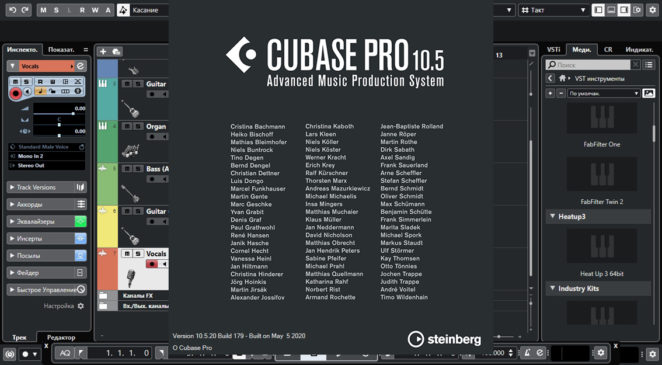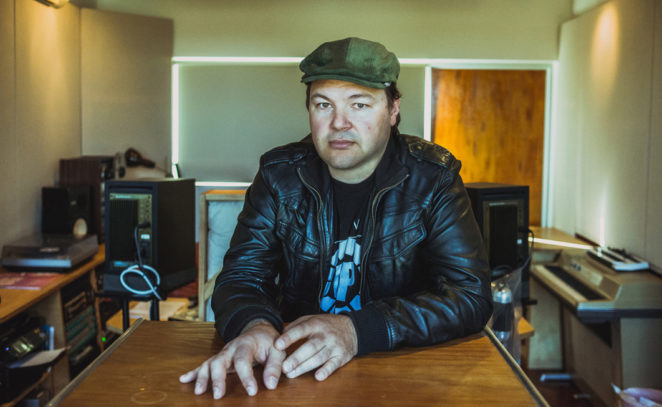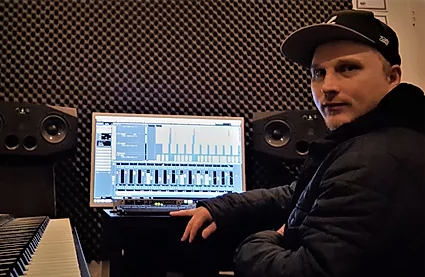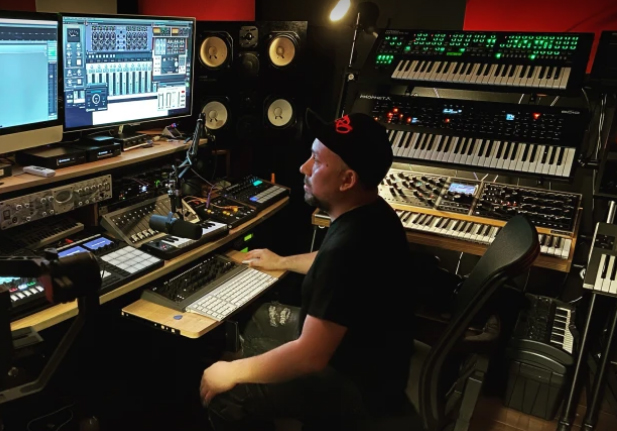
As Digital Audio Workstations become more advanced, it’s frightening to think of where the technology began and the leaps and bounds that have been made since. Music production software is now accessible to anyone who wants to create and record their music at home and there are numerous product choices available, depending on your individual needs, the way in which you like to work and your budget. A recent phone around to some local musicians and producers revealed that there seems to be a certain loyalty toward one DAW over the others, rather than being a jack of all trades and dabbling in them all. I guess the investment in time to learn their DAW of choice and the initial financial outlay creates a tendency to stay with what you’re familiar and comfortable with and If it ain’t broke, why fix it right? Certainly the Cubase users I spoke with are keenly loyal and have no real inclination to try anything else.
The first version of Cubase was released by Steinberg in 1989 and was originally only a MIDI sequencer, running on the Atari ST computer. Anyone remember the Ataris? Cubase was then released for Apple Mac a year later. Cubase really started to get ahead of its rivals in the mid 90s when they introduced VST (Virtual Studio Technology) plug-in effects. Steinberg’s Cubase has continued to develop and become one of the most popular DAWs in the recording world. Cubase 10.5 is the current version.
We spoke to three Australian artist/producers who have settled on Cubase as their DAW of choice.
 ARIA and APRA nominated songwriter and producer Jake Mason is a 20-year quiet achiever of the Australian music industry. Jake’s co-write ‘This Girl’ (Kungs Vs Cookin’ On 3 Burners) which charted at number 1 in 10 countries, has over one billion streams and was the most shazamed dance track worldwide in 2016. Bridging jazz/soul and pop, Jake has released 15 albums and established his own label and studio Soul Messin’ Records. He manages the business affairs of Cookin’ On 3 Burners too. Jake has worked with many acclaimed artists and his screen work spans TV (Love Island, A Million Little Things, MacGyver, My Life Is Murder) and advertising/sync – Just Jeans, Westpac (Australia), Peugeot (Europe), Samsung (USA, played at the Superbowl), Vogue, Victoria’s Secret and the Ellen Degeneres Show. Jake’s relationship with Cubase goes right back to the beginning.
ARIA and APRA nominated songwriter and producer Jake Mason is a 20-year quiet achiever of the Australian music industry. Jake’s co-write ‘This Girl’ (Kungs Vs Cookin’ On 3 Burners) which charted at number 1 in 10 countries, has over one billion streams and was the most shazamed dance track worldwide in 2016. Bridging jazz/soul and pop, Jake has released 15 albums and established his own label and studio Soul Messin’ Records. He manages the business affairs of Cookin’ On 3 Burners too. Jake has worked with many acclaimed artists and his screen work spans TV (Love Island, A Million Little Things, MacGyver, My Life Is Murder) and advertising/sync – Just Jeans, Westpac (Australia), Peugeot (Europe), Samsung (USA, played at the Superbowl), Vogue, Victoria’s Secret and the Ellen Degeneres Show. Jake’s relationship with Cubase goes right back to the beginning.
“It was the late 80s and it was on an Atari, so quite a long time ago” Jake tells me. “I was in early high school when I started mucking around with it. I first borrowed a friends and then bought my first Atari and Cubase.”
Jake works on such a wide variety of projects, playing different roles and exploring various music genres, I wondered what was the important factor for him in a Digital Audio Workstation.
“I think something where you can have the creative process as the driving force of whatever you are doing, whether that is songwriting or mixing. The creative process is first and foremost with the software underneath supporting all of that. Probably all of the software programs have that to a degree because if you know the software well, you’re going to be able to do that. Cubase though, is one that has a bit more of the creative element in it, opposed to the engineering elements, which I guess Pro Tools is known more for.”
One of Jake’s main projects is the soul, R’n’B outfit, Cookin’ On 3 Burners. The band has an authentic Hammond retro sound, aided by the fact that they initially create and record their music in an ‘old school’ manner, using analogue gear. However, that’s where the old ways end and the digital realm begins, as they dump the music files onto the computer, where they can refine and modify the sounds in Cubase.
“I do use Cubase very much like a virtual studio, unlike something like Ableton, although Cubase does have elements of Ableton’s flavour but I don’t necessarily use those parts of the program,” Jake explains. “For me it’s more about replicating a traditional analogue studio. So yes, we record onto tape and then dump it into the machine and then continue with that virtual analogue process. One of the things I think is really crucial with Cubase … which you might be able to do with a bunch of the other ones but it has been in this program for a while … and that’s being able to export bits of analogue gear with the system. Quite often at the end of a mix I will have an analogue spring reverb or even two spring reverbs and a bunch of valve compressors and other gear that is all integrated with the mix. I tend to be the opposite of people who have it ‘in the box’ so to speak and I run lots of external stuff. The latency and delay timing compensation that Cubase does is fantastic. It just makes it work, you don’t have to think about it, so it is really good.”
Jake’s rig consists of an Apogee Symphony 2 audio interface or Cranesong Spider eight channel mic-preamplifier mixer. For his monitoring he uses both the Dynaudio BM6A’s and a trusty pair of Yamaha NS10s.
During the current Covid-19 isolation period, Jake is working on an album for his own band, The Jake Mason Trio with James Sherlock and Daniel Fisher and also doing a bunch of remote writing sessions with Dan and Ivan from Cookin’ On 3 Burners.
 JESSE MARANTZ is a multi-award winning music producer & composer. Jesse has produced and composed music for major advertising campaigns for brands such as Victoria’s Secret, VISA, Uber, Myer, Reebok, Rimmel London, Estee Lauder, Contiki, Rexona, ABSA and Remington, as well as for numerous shows on MTV, ESPN, HBO, E!, VH1 and Bravo. In 2016 Jesse released the Triple J hit, ‘I’ve Gotta Have You’ (w/ Fluir). It was picked up by ‘Myer’ in 2017 and has become the soundtrack to all ‘Myer’ stocktake TV commercials since.
JESSE MARANTZ is a multi-award winning music producer & composer. Jesse has produced and composed music for major advertising campaigns for brands such as Victoria’s Secret, VISA, Uber, Myer, Reebok, Rimmel London, Estee Lauder, Contiki, Rexona, ABSA and Remington, as well as for numerous shows on MTV, ESPN, HBO, E!, VH1 and Bravo. In 2016 Jesse released the Triple J hit, ‘I’ve Gotta Have You’ (w/ Fluir). It was picked up by ‘Myer’ in 2017 and has become the soundtrack to all ‘Myer’ stocktake TV commercials since.
Jesse has been passionate about his chosen DAW, Steinberg’s Cubase since he first discovered it.
“I was put onto Cubase by a friend around 15 years ago. I fell in love with it and I couldn’t use anything else. It’s the best DAW ever. We were all put onto it by the same guy and stuck with it. At the time, going back 15 years we tried Fruity Loops and I came across Pro Tools a few times. I have tried a few, researched them all. I am interested to read about them but for me, if Cubase stopped being a program tomorrow, I’d be so upset and probably have to use two DAWs to replace it.”
So why is Jesse so passionate about Cubase?
“I like the versatility because professionally at the moment, I make music for TV commercials and I don’t limit myself to any genre, so I will go from heavy electronic, pop music, orchestral scores, heavy … and I feel like Cubase can do it all. I can jump between genres so easily with it and that’s why I say I’d have to use two DAWs if I couldn’t use Cubase. I’d need to use Ableton if I was making a beat and something like Logic for orchestral scores, it’s just how I feel.”
Some producers and artists might use their DAW mainly as a recording machine but Jesse sees Cubase as more of a creative tool with a far greater role in his music. “In fact I’d say creative first! I work in all genres and I work with a lot of singers and I record my own instruments. I use a lot of MIDI too and I think Cubase is second to none on MIDI, so 70 to 80 percent of my time I am playing with MIDI. I use virtual libraries a lot, I have a lot of libraries. So using MIDI with Cubase, yes it’s very creative for me so I am not just using it for recording.”
Like most of the people we spoke to for this feature, Jesse isn’t oblivious to other DAWs, he does read up on them but you’ll never get him off the Cubase train. “I will always check them out because it’s awesome,” he says. “DAWs are the coolest things compared to how recording used to be. I love to see what everyone is adding. I’ve noticed that in the last couple of years Cubase has taken a lot from Studio One. I can see them playing catch up with Studio One on a few things and catch up with Ableton but Cubase’s foundation is so strong. Plus I use a PC, which rules out Logic for me. I’m not a big Mac fan because of pricing. I have a really maxed out PC and a really good RME interface, some really good monitors and a couple of MIDI controllers. Somebody said the other day, why don’t you buy some outboard gear and I just said no I have so many plug ins and I just love it. I mix and master everything myself, so it takes a lot of CPU. By the end of a session my computer is smashed. I master on Cubase and that’s another reason why I love it. It’s mixing is incredible, mastering is amazing. Like I said earlier, if Cubase didn’t exist I would have to buy two DAWs. If you go deep into Cubase, it can do anything.”
 ANDRO MARTINEZ is a Sydney-based original artist, producer, recording & mixing engineer, session guitarist and beat maker. Andro plays regularly with his brothers in their fabulous soul R’n’B band Gang of Brothers and also works with other artists including: Carlos C-Major, Lolita Mae, and Darryl Beaton.
ANDRO MARTINEZ is a Sydney-based original artist, producer, recording & mixing engineer, session guitarist and beat maker. Andro plays regularly with his brothers in their fabulous soul R’n’B band Gang of Brothers and also works with other artists including: Carlos C-Major, Lolita Mae, and Darryl Beaton.
Andro started using Steinberg’s Cubase around 1995. After using a 4 track machine previously, Andro was taken aback by the new methods of recording that were becoming available.
“I found out that I could do all of these amazing things using software,” he tells me. “I lost my shit! I did a short course at TAFE and that’s where I discovered software and they were using Cubase, so I just went and bought a copy and I have been using Cubase ever since. The moment I found out you could do all of these things on it, that’s all I wanted to do and I went hard at it. I think at the time there was more frustration because computers would crash all the time. Also around then, there were no YouTube videos to teach you, everything was brand new technology.”
For Andro and the multitude of tasks he is involved with, workflow is the most important factor for him in a DAW.
“The sound now is very standard on any DAW, the plug-ins are the same, so I think it’s workflow, being able to get to where you want to quickly but Cubase comes into everything I do. I have written so many songs that are based around the fact that I am using Cubase. If I was writing just on a guitar it would be completely different. There are many ways of writing a song. A lot of people say to write a great song you need a guitar or piano but I think you can write a song just starting from a beat or a synth sound, that you can get out of using a DAW like Cubase.”
In his sales role at a music store in Bondi years ago, it was Andro’s duty to learn about all of the DAWs that were available at the time, so his decision to choose Cubase is significant.
“I have had experience with Logic a bit and Pro Tools and a few others things because I was a hi-tech guy at a music shop in Bondi Junction, so I was selling all the gear. Plus in my studio, a lot of people bring me sessions from other DAWs. I also use Maschine Ni, that’s a big one I do use. I make a lot of beats with that and it talks to Cubase with the connections that I have, so that’s convenient.”
Andro runs Cubase Pro 10.5 and uses an Apollo 8P that’s also connected to an RME ADI8 Pro converter. He also has a JLM Audio preamp, which has 8 inputs.
https://soundbetter.com/profiles/182783-andro-martinez
Steinberg’s Cubase is distributed in Australia by Yamaha Music Australia


